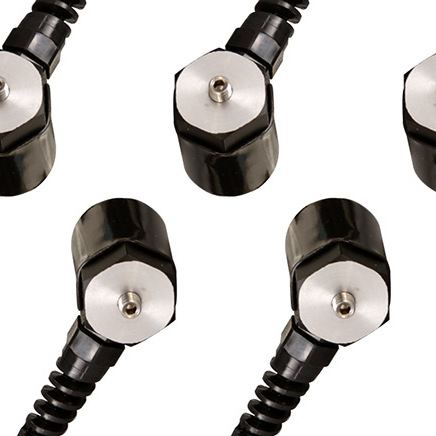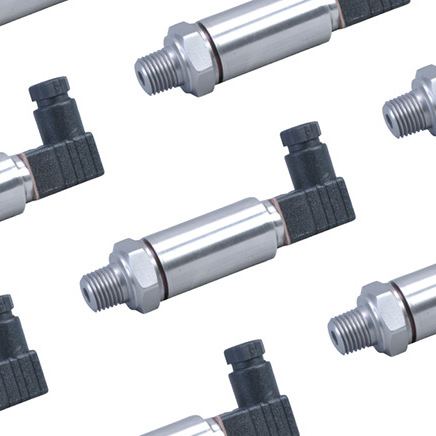Pressure gauges, which are devices that measure the internal pressure of media within a system, are among the most often used instruments in any given industrial facility. Pressure measurement is, along with temperature measurement, one of the most important measurements for operations in a wide variety of applications – especially industrial applications – and it is essential in ensuring both the quality of a product and the safety of a facility and its personnel.
Pressure gauges are used to monitor and control pressure – which is often a necessity in industrial processing. Without pressure gauges, industrial processing systems would be both unpredictable and unreliable.
Pressure gauges are used by industry professionals to troubleshoot fluid power machines – which are designed to work within a set pressure range. With properly installed gauges, leaks and unwanted pressure changes can be monitored and addressed immediately.
Types of Pressure Gauges and How They Work
Often, the terms pressure gauge, sensor, transducer, and transmitter are used interchangeably. The term pressure gauge usually refers to a self-contained indicator that converts the detected process pressure into the mechanical motion of a pointer. Pressure gauges can either be mechanical or digital.
The first pressure gauges used flexible elements as sensors. As pressure changed, the flexible element moved, and this motion was used to rotate a pointer in front of a dial. In these mechanical pressure sensors, a Bourdon tube, a diaphragm, or a bellows element detected the process pressure and caused a corresponding movement.
Analog Pressure Gauges
 Analog Pressure Gauge
Analog Pressure Gauge
Analog pressure gauges use a needle to indicate the pressure sensed on a dial scale. These types of sensors have been an industrial staple for over a hundred years, and are inexpensive, easy to use, and do not require a power source to operate.
However, analog pressure gauges are mechanical and, as such, are prone to damage and require either consistent maintenance or regular replacement – which can add to overall operational costs. Accuracy can also be an issue with analog pressure gauges. Application variables such as mechanical vibration or harsh field conditions can lead to inaccurate readings.
Bourdon Tube
 Figure 1: Bourdon Tube Designs
Figure 1: Bourdon Tube Designs
Bourdon tube gauges rely on the principle that a curved tube tends to straighten out when subjected to pressure. The tube is connected to a pointer so that pressure fluctuations are indicated on a calibrated scale on the dial. This type of analog pressure gauge works very well for most applications, particularly those involving medium to very high pressures.
Diaphragm or Bellows
 Figure 2: Pressure Sensor Diaphragm Designs
Figure 2: Pressure Sensor Diaphragm Designs
Bellows gauges contain an elastic element that expands and contracts to respond to pressure changes. The internal bellows is connected to a pointer so that pressure fluctuations are indicated on the dial. These types of analog pressure gauges are a great solution when measuring pressure ranges below what is ideal for Bourdon tube gauges.
Digital Pressure Gauges
 Digital Pressure Gauge
Digital Pressure Gauge
Digital pressure gauges, which are becoming increasingly popular, provide fast results with clear readability and very high accuracy. These sensors are far more durable than analog sensors, and are capable of performing in extreme conditions with heavy mechanical vibration. In addition, digital pressure gauges stay calibrated for longer periods of time and are much more precise than analog sensors.
Another huge advantage of digital pressure gauges is the data they are capable of providing. These types of high accuracy pressure gauges can send results to computers, data loggers, and other instruments for analysis. Digital pressure gauges are ideal for very low pressures or small incremental pressure changes that would be impossible to identify with an analog gauge.
Digital pressure gauges also provide more control – often units can be changed, minimum and maximum data be recorded, backlights can be added, and some DPG’s even have alarms.
Strain Gauge
Applied pressure causes deformation of the diaphragm which is connected to a strain gauge that exhibits a change in resistance when strained. The pressure is determined by reading the variation of the output voltage which is proportional to the change in resistance of the strain gauge.
Piezoelectric
Piezoelectric crystals generate an electrical charge when strained. The strain produced from the stress on the diaphragm is converted to an electric charge which is proportional to the pressure.
Piezoelectric
Piezoelectric crystals generate an electrical charge when strained. The strain produced from the stress on the diaphragm is converted to an electric charge which is proportional to the pressure.
How to Select a Pressure Gauge
To understand which pressure gauge should be used for a specific application, one must understand different types of pressure.
Types of Pressure
All pressure is measured in relation to a reference pressure. The difference in the types of pressure is what that reference pressure is defined as.
Gauge Pressure – psig Pressure measured in relation to local ambient pressure. This type of pressure is zero-referenced against ambient air (or atmospheric) pressure – which means that gauge pressure includes the pressure from the weight of the atmosphere. Because of this, gauge pressure varies with height above sea level as well as to weather conditions.
Absolute pressure Absolute pressure is the pressure in relation to a perfect vacuum.
Differential Pressure – psid Differential pressure is the pressure measurement between two pressure points. While all pressure is essentially differential – gauge pressure is in relation to atmospheric pressure and absolute pressure is in relation to vacuum – differential pressure measures pressure where the reading and reference values are variable.
Compound Gauge Pressure Compound pressure measures both positive and negative (vacuum) pressures.


